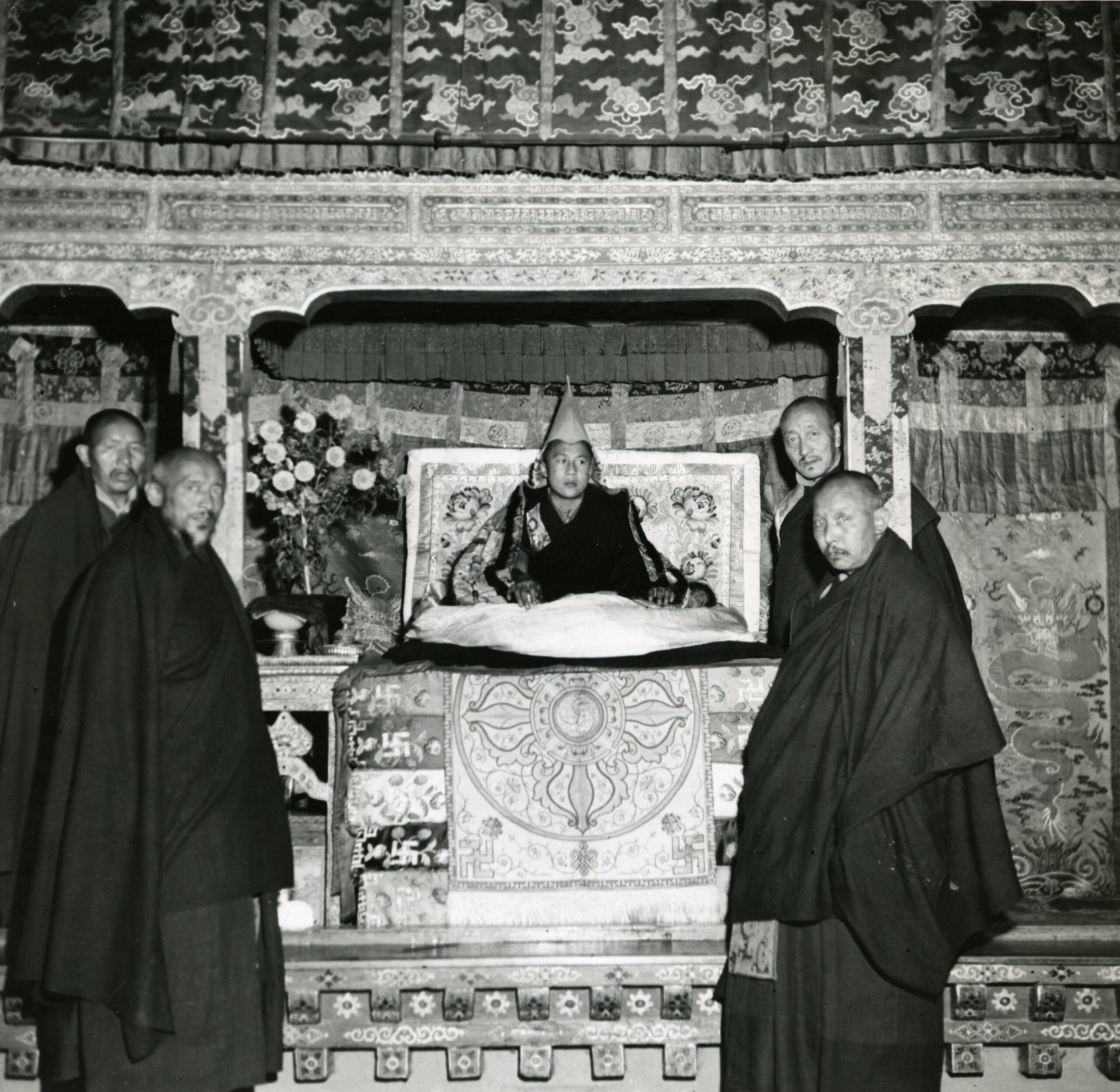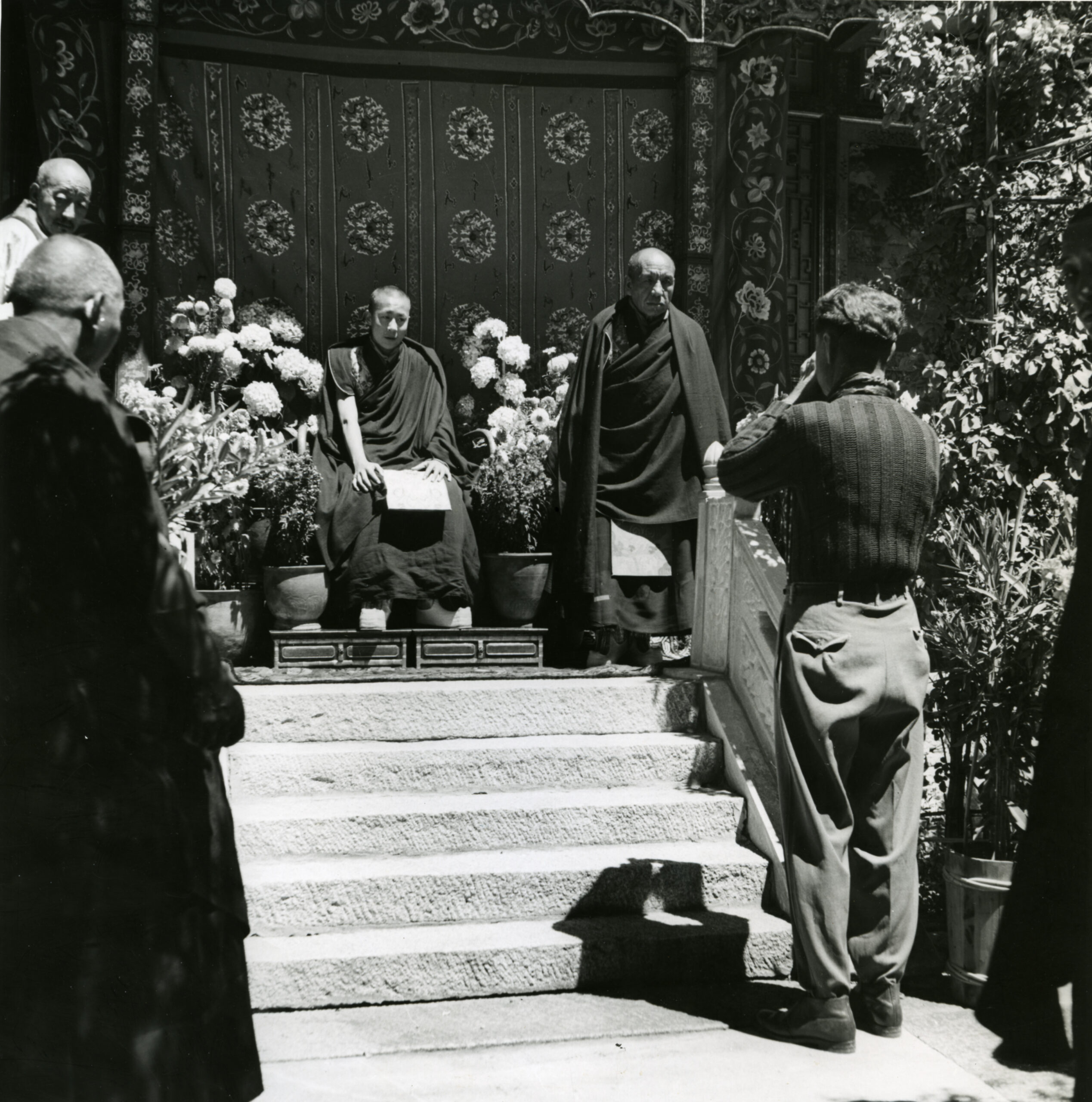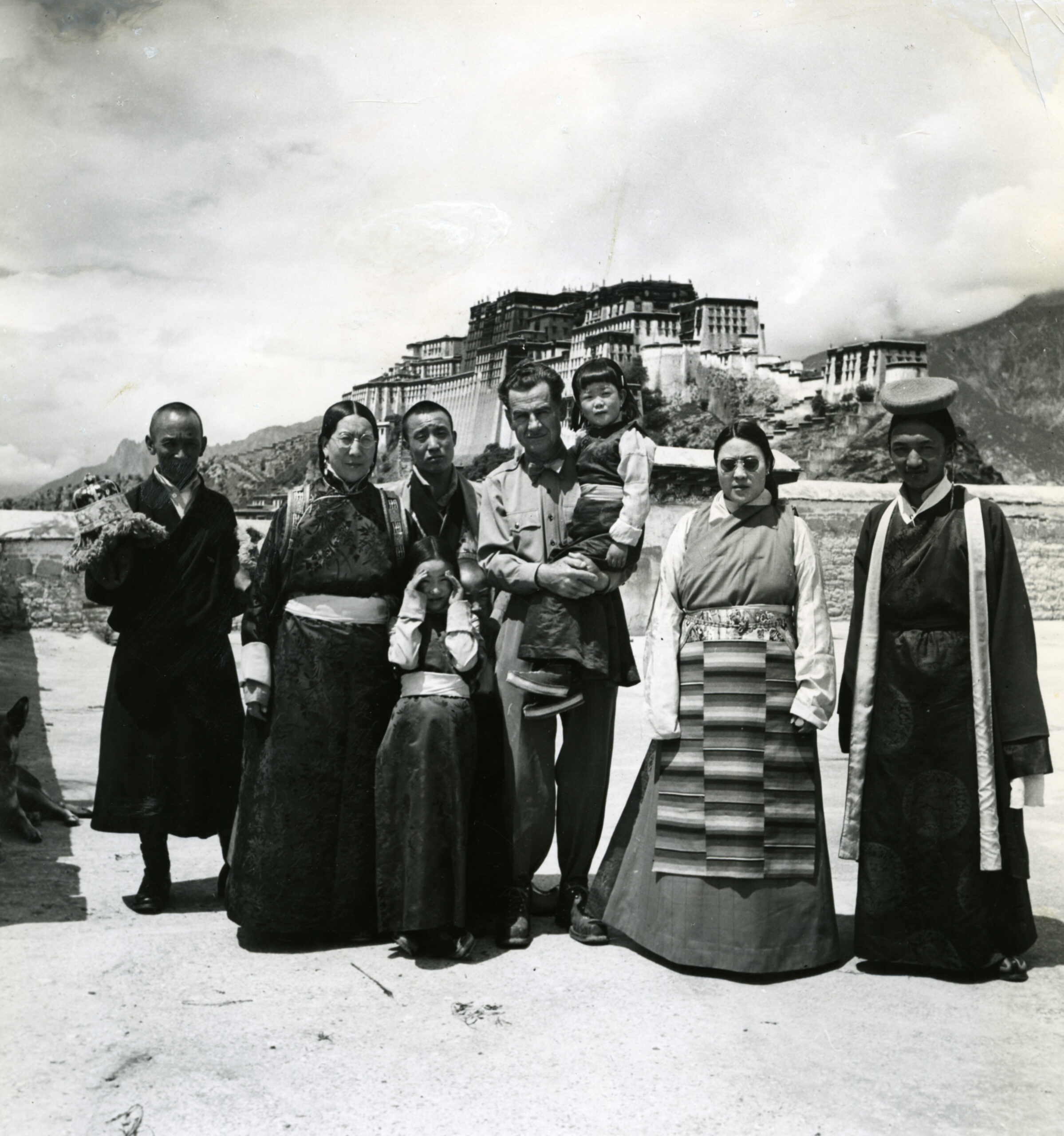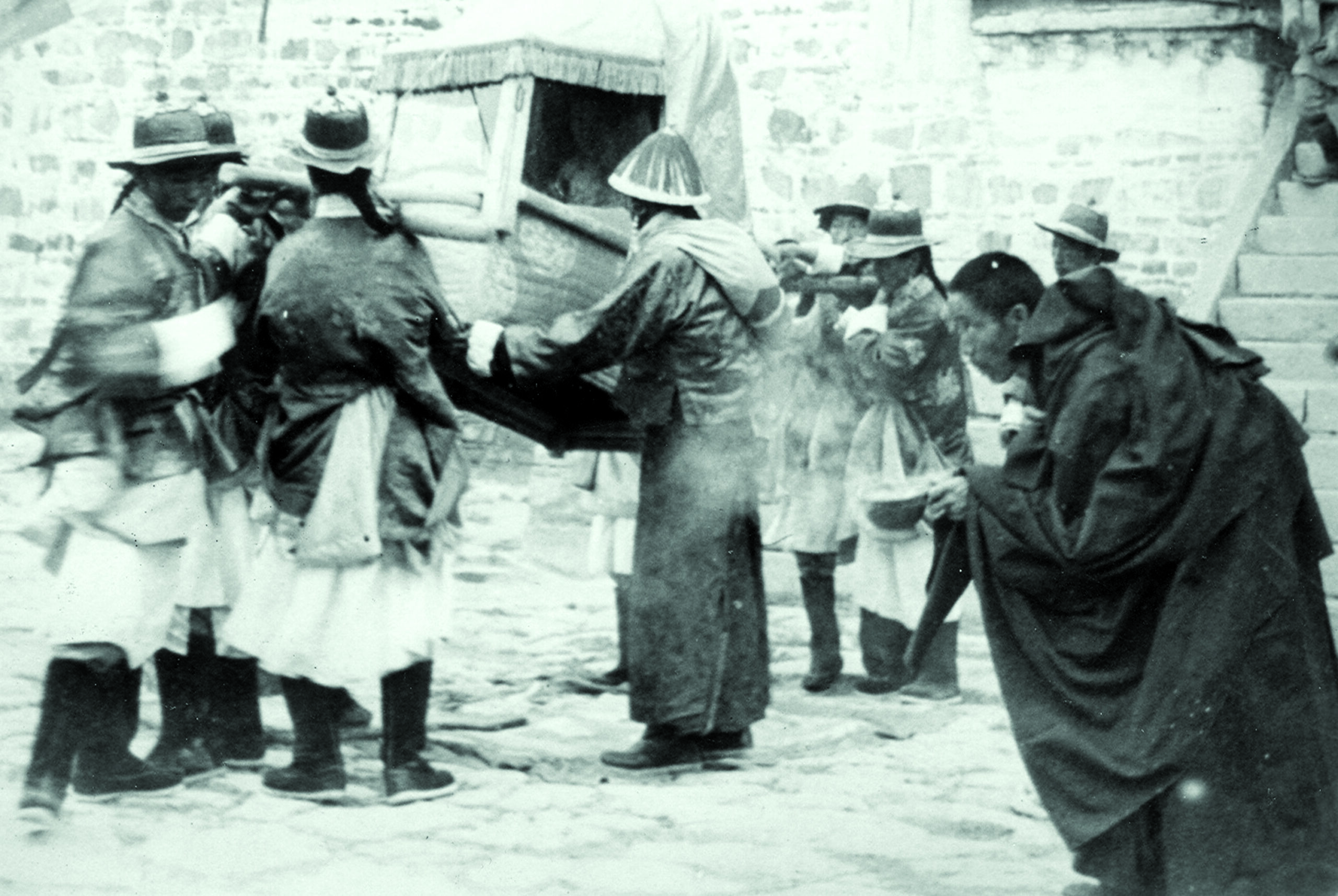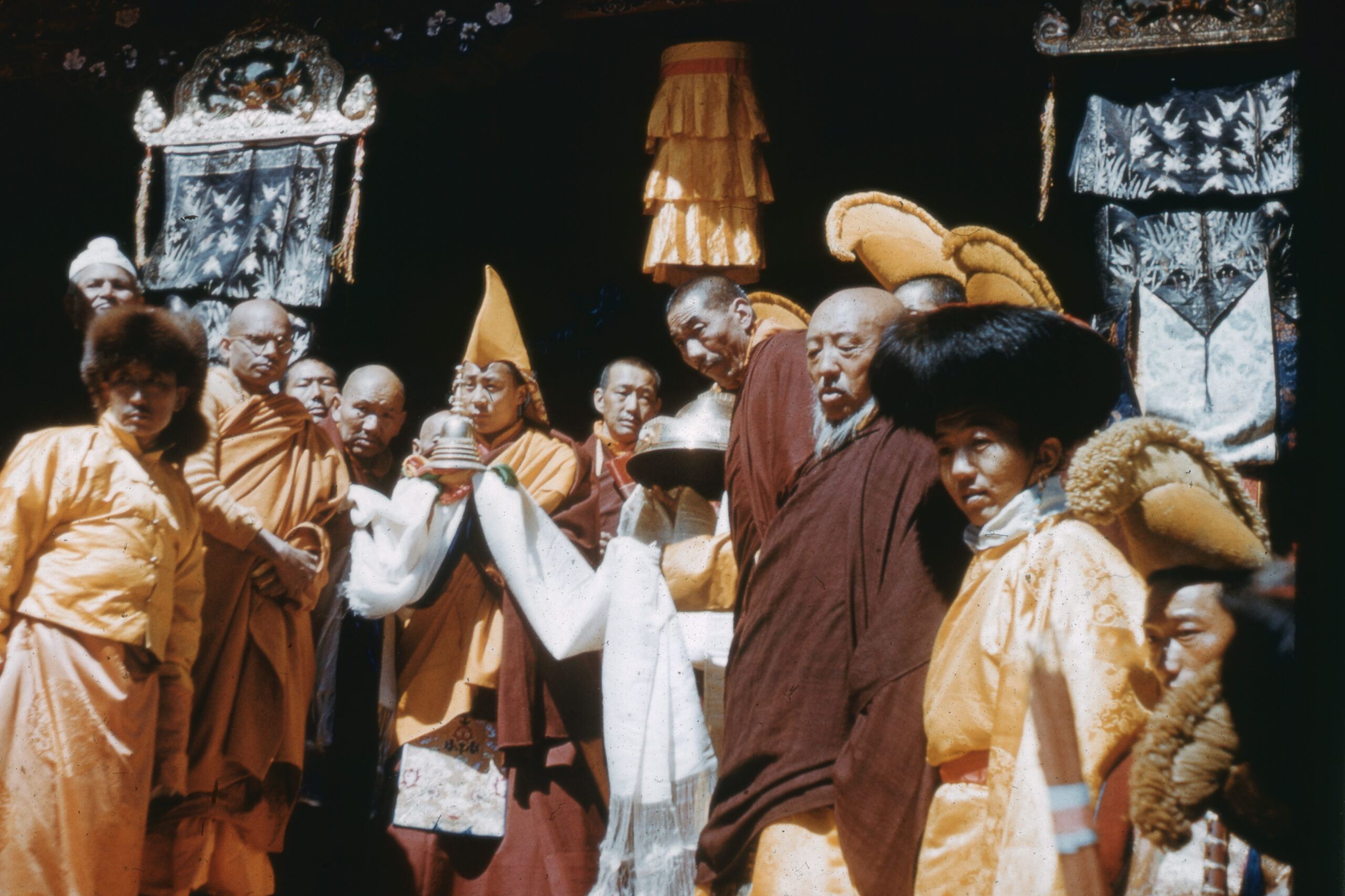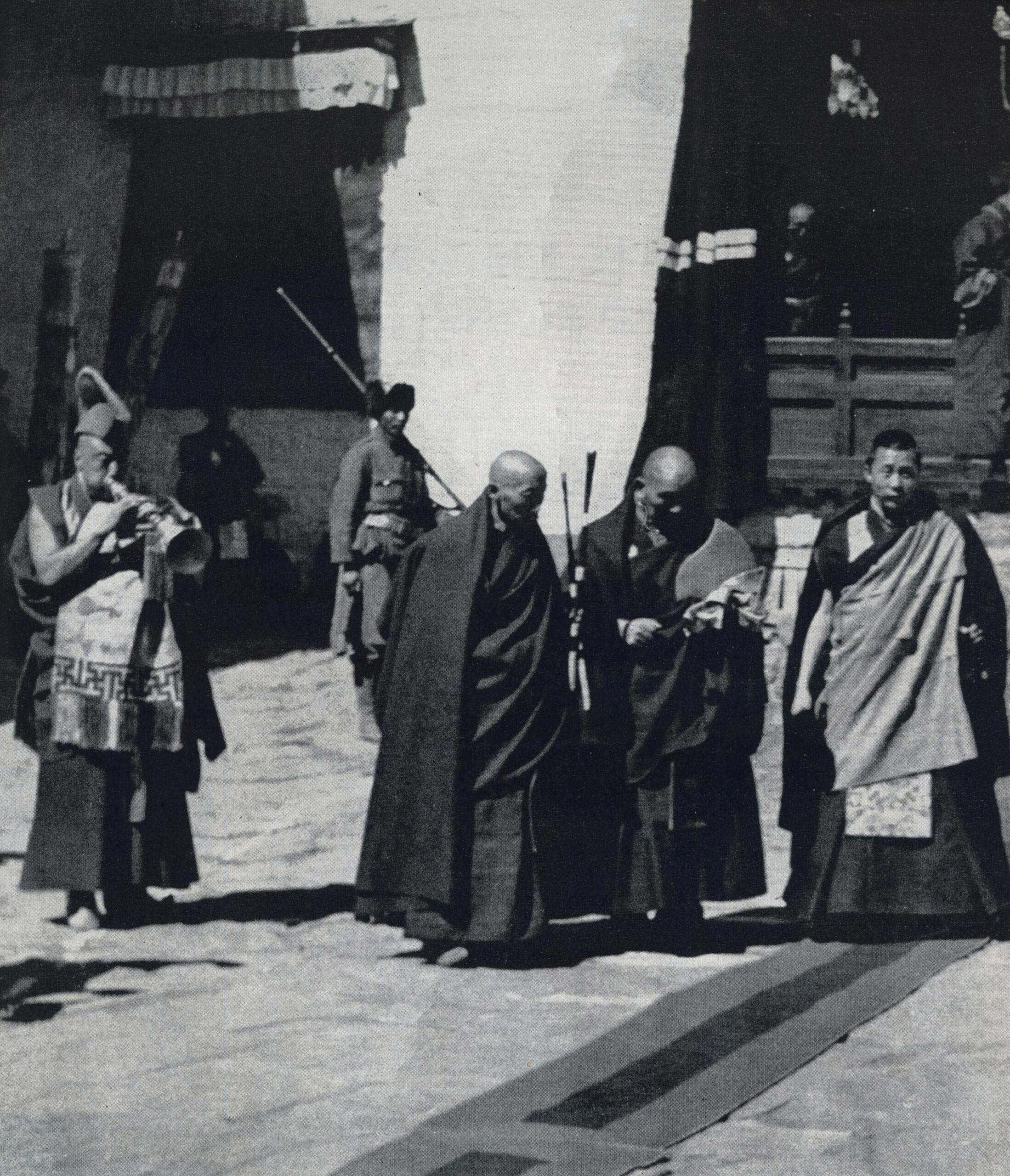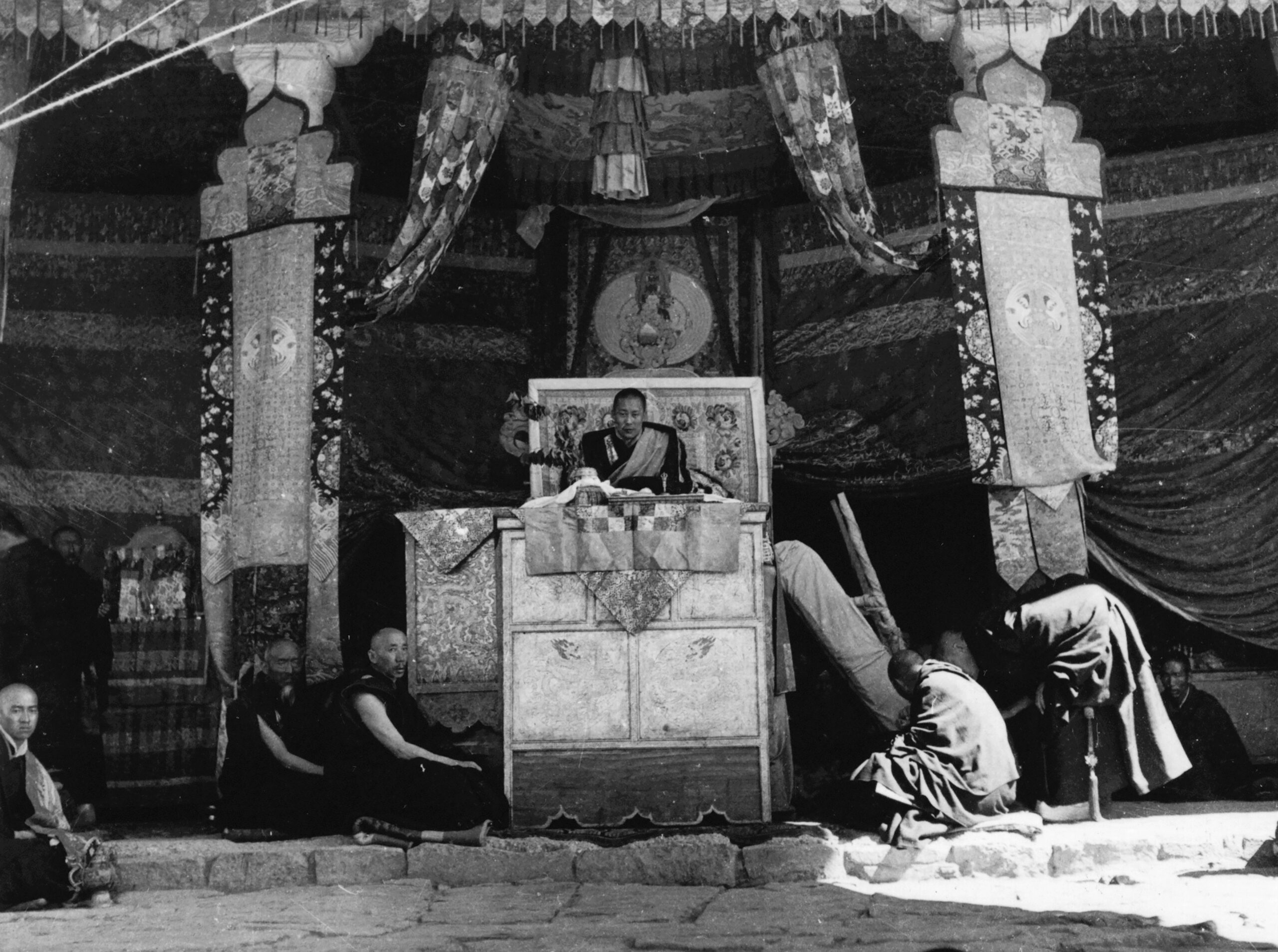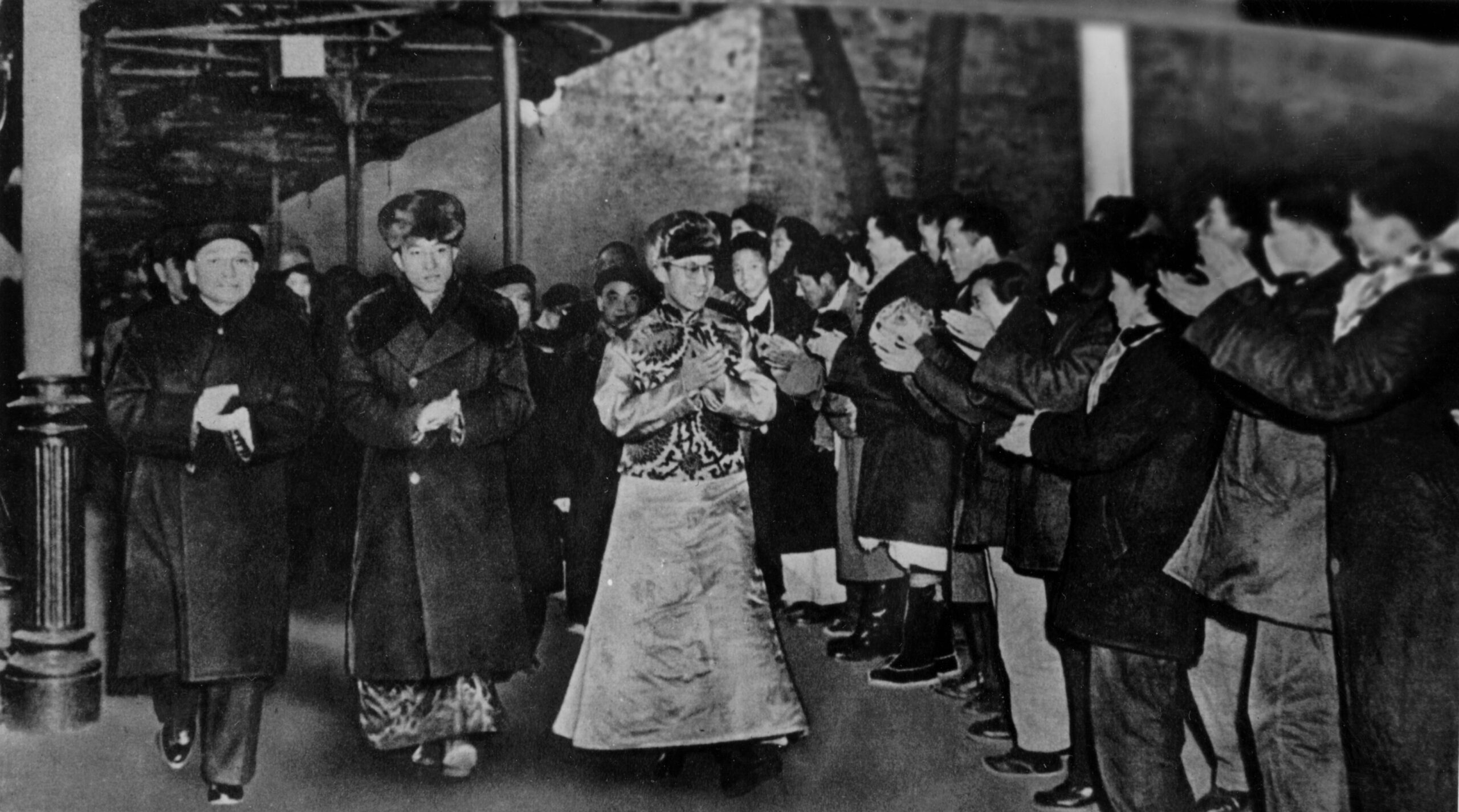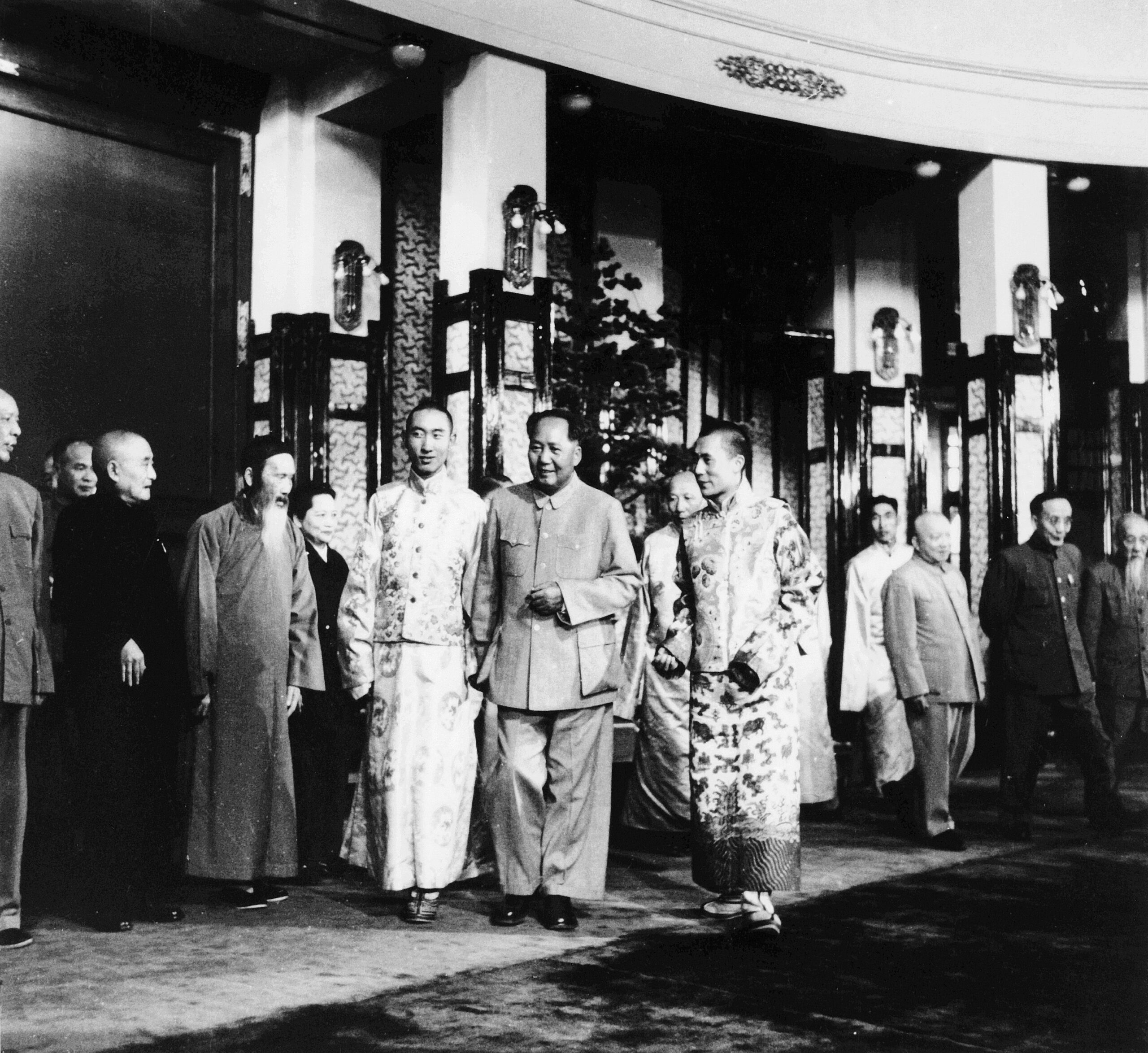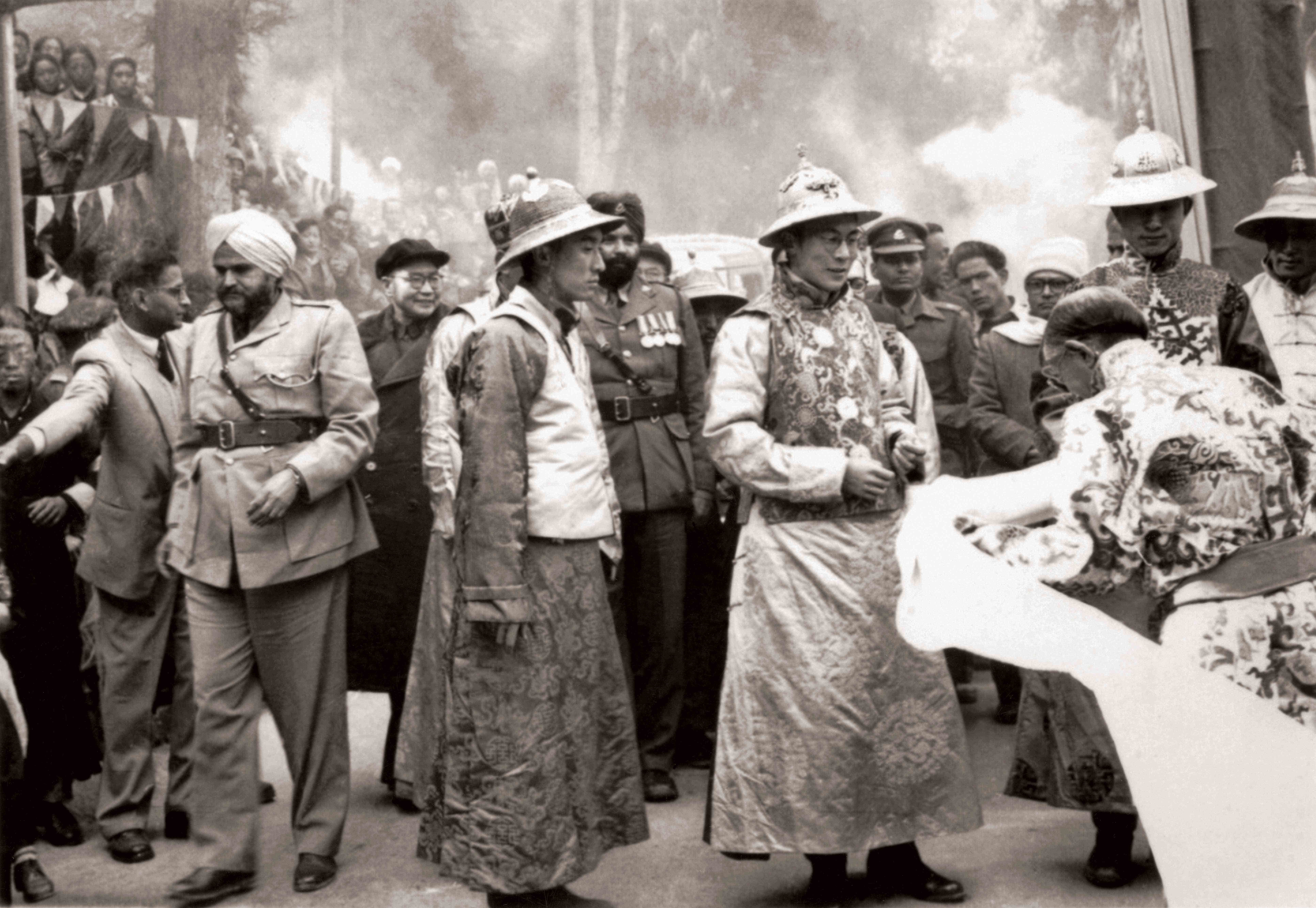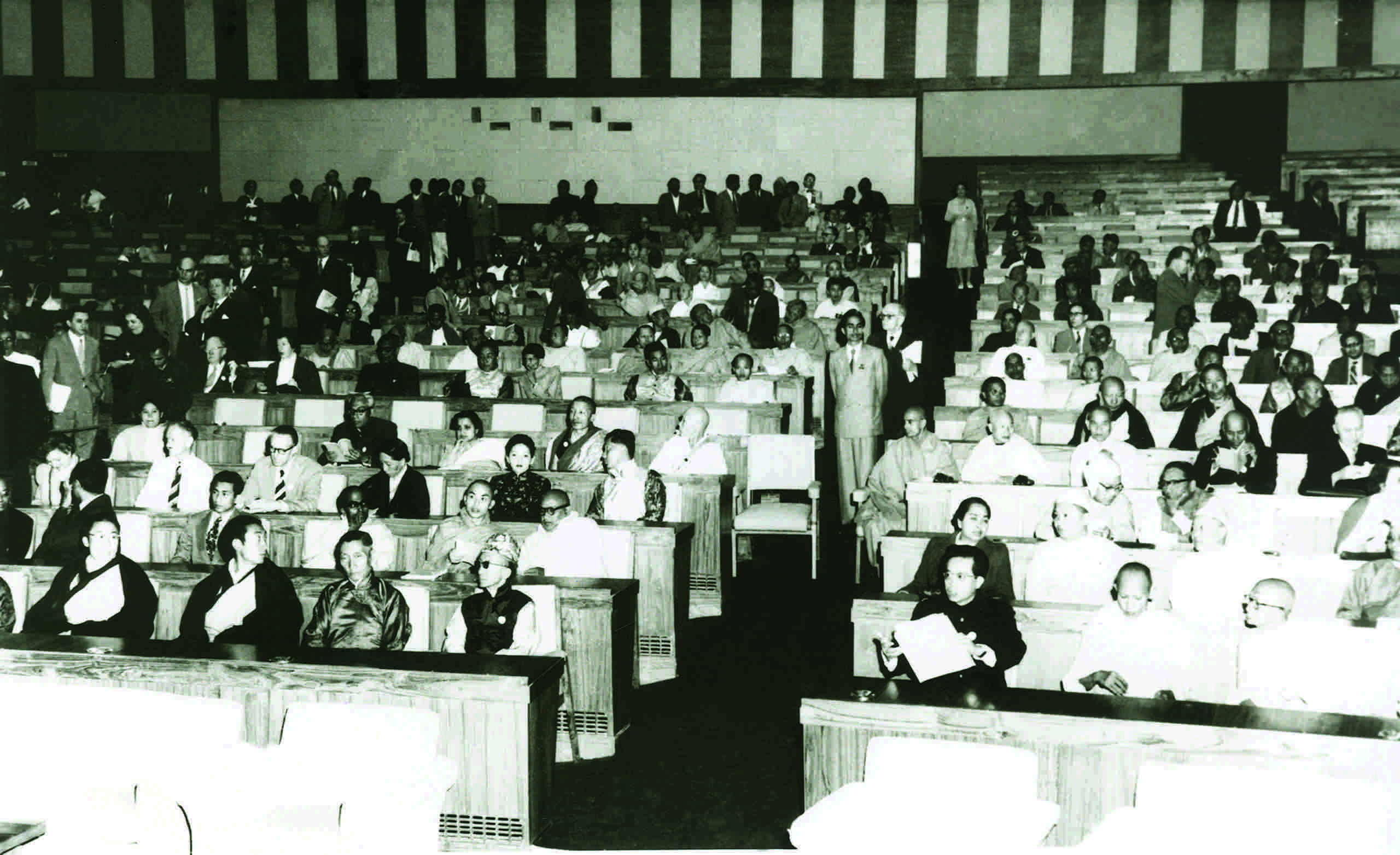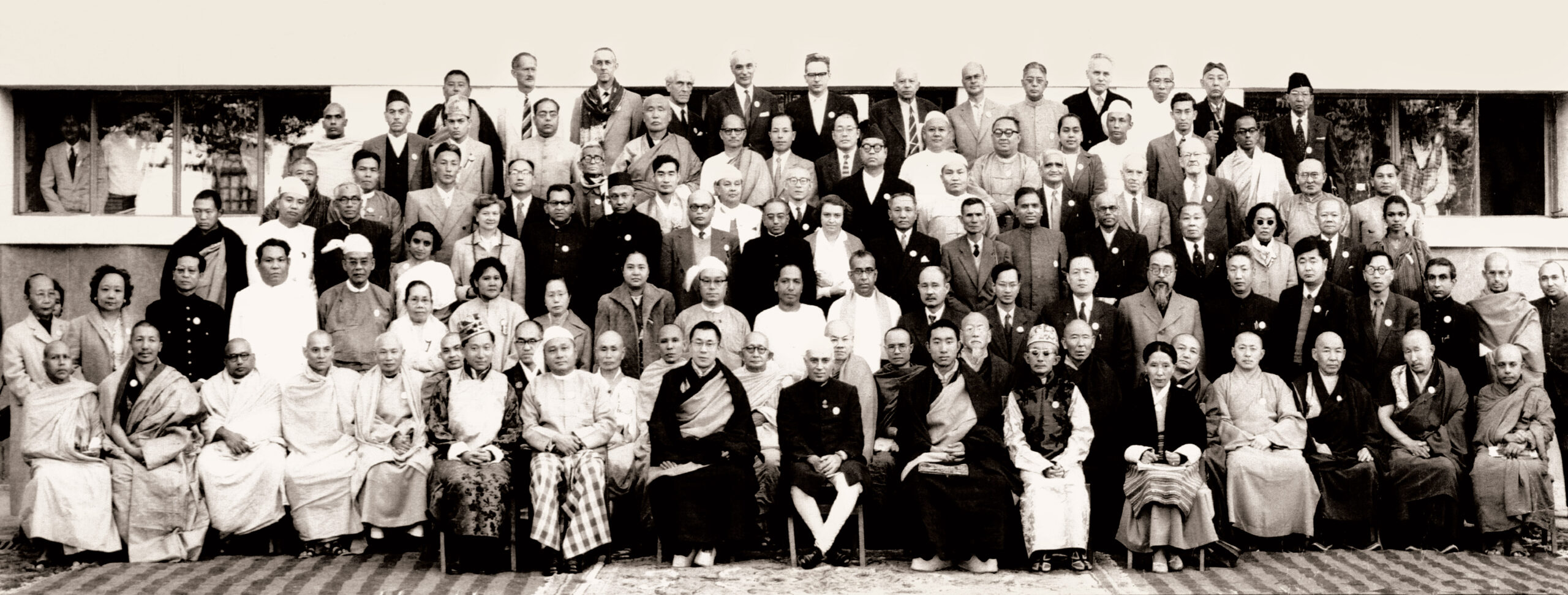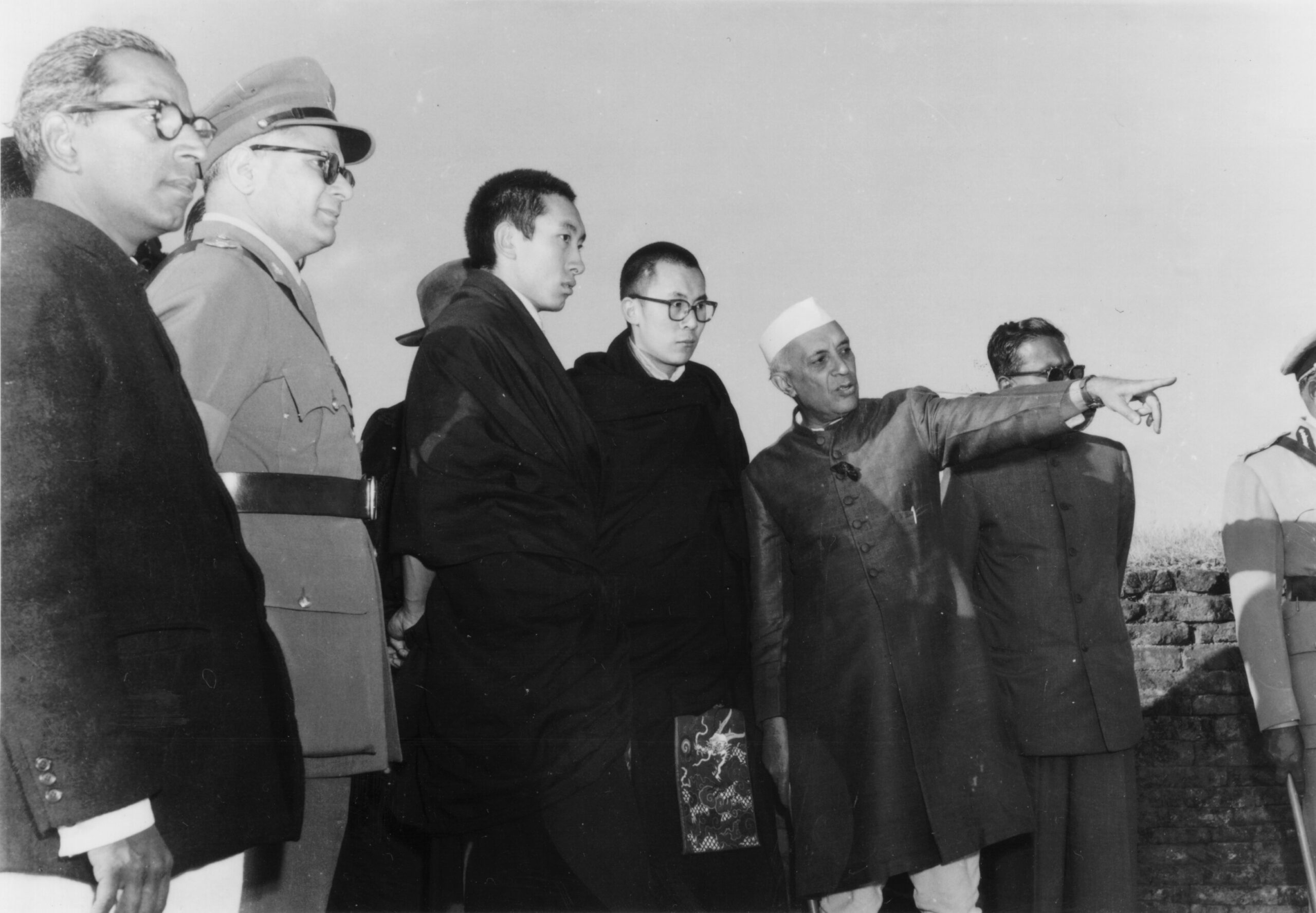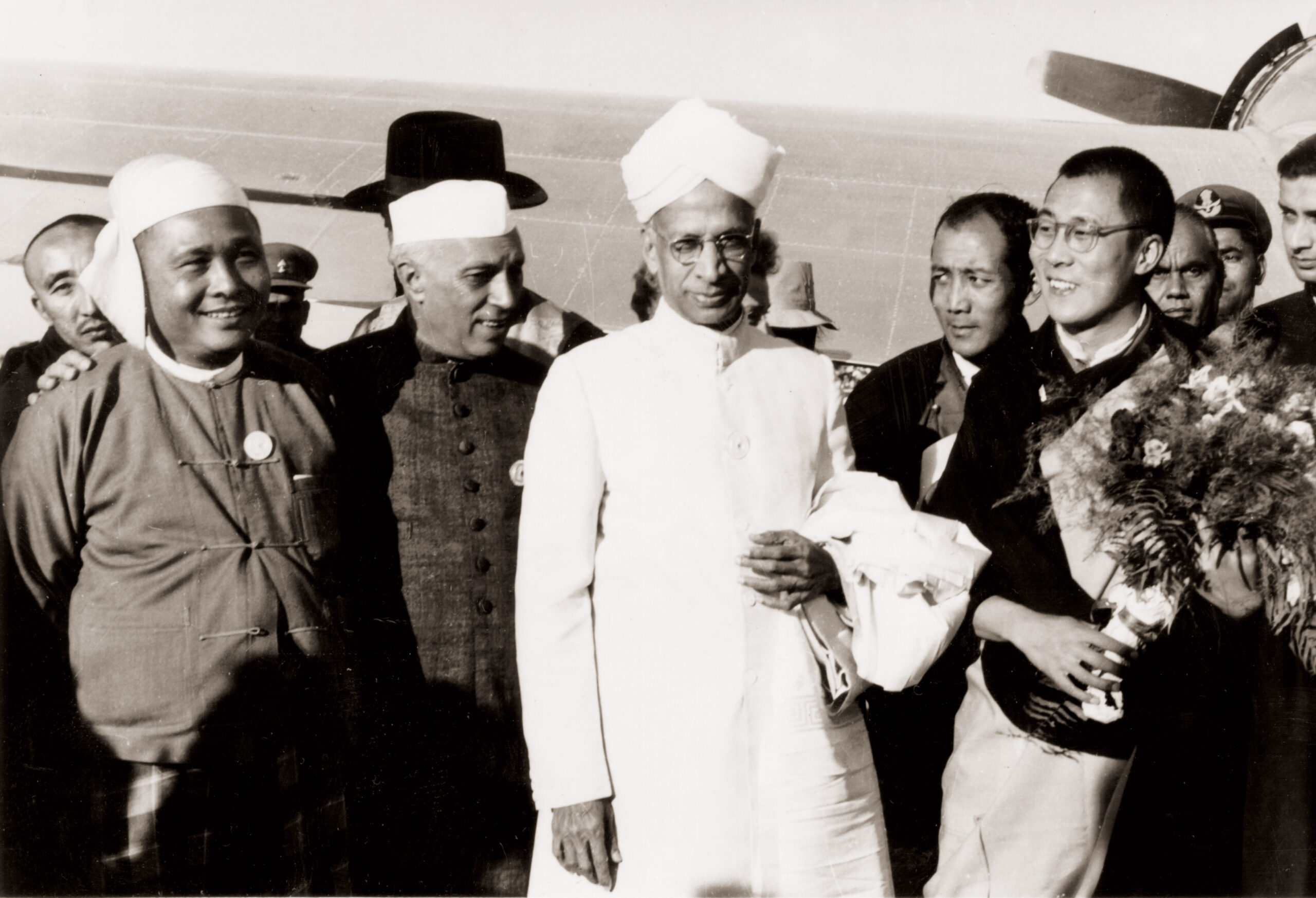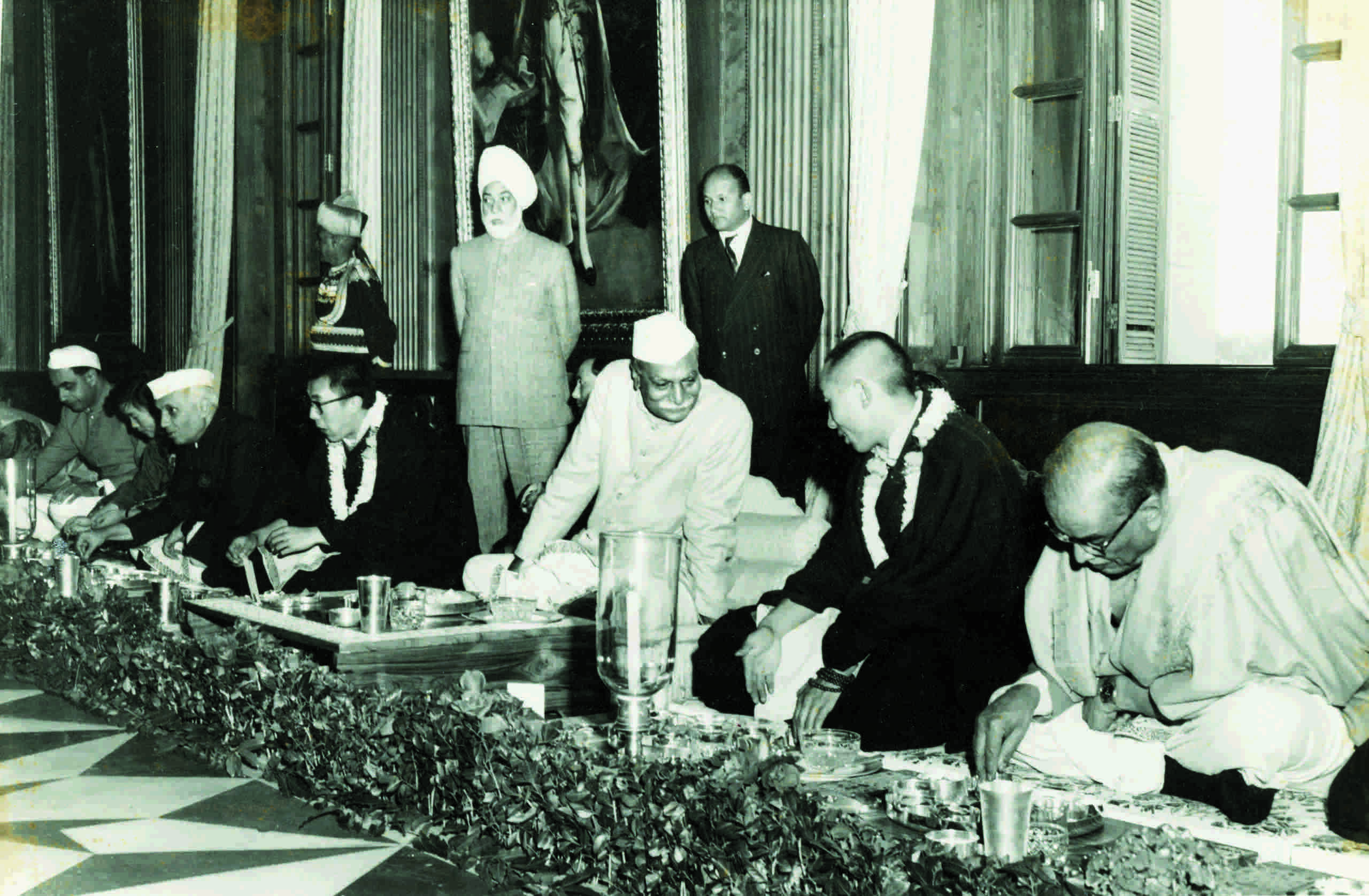
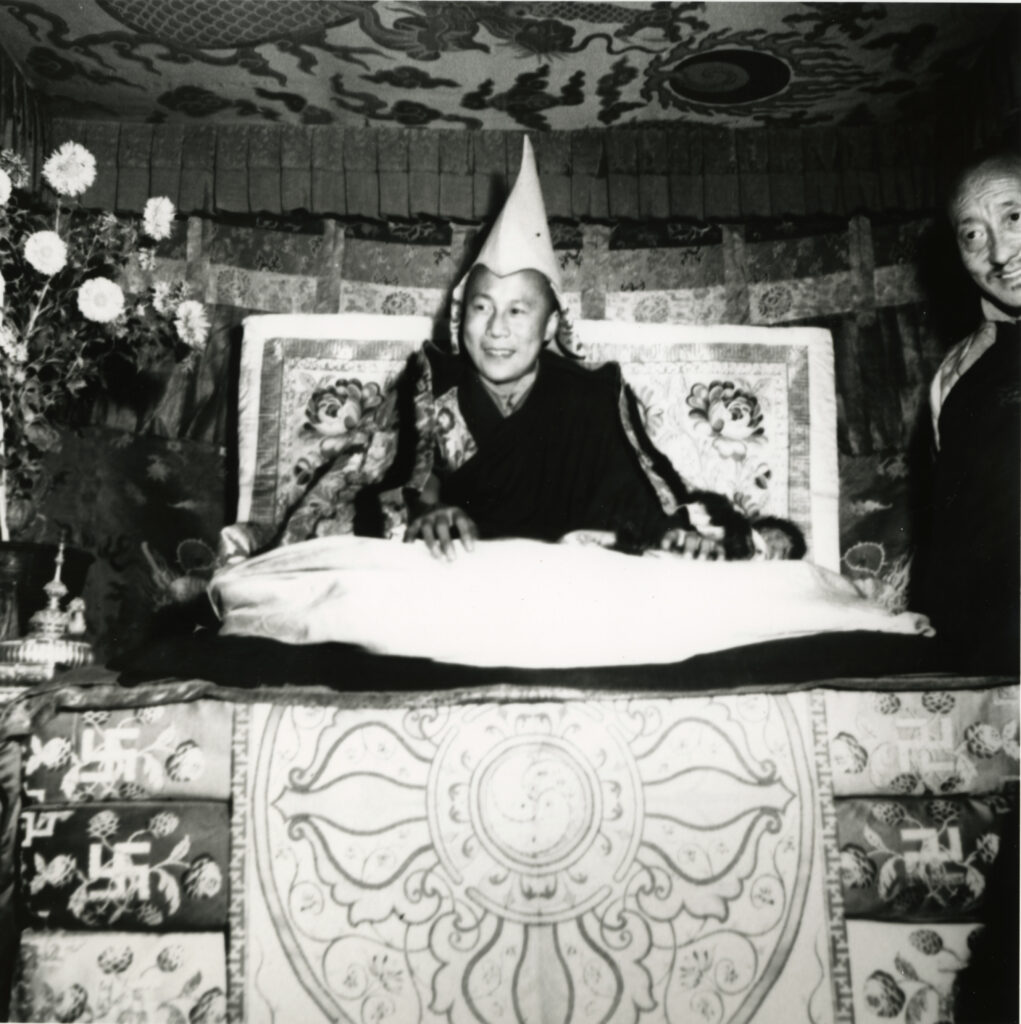
Becoming Leader of a Nation
On 1 October 1949, China became the People’s Republic of China under communist rule. Shortly afterward, it began invading neighboring regions, including Tibet. On 7 October 1950, more than 40,000 Chinese troops launched an attack on Chamdo, the capital of Tibet’s eastern province of Kham. Tibet’s small military force was quickly overwhelmed. Within 11 days, thousands of Tibetan soldiers were killed. On 25 October, China announced its intent to advance toward Lhasa, Tibet’s capital.
Amid this national emergency, His Holiness the 14th Dalai Lama was urged to assume full political responsibility for Tibet. On 17 November 1950, at just 15 years old, he was formally enthroned as the spiritual and temporal leader of Tibet.
Due to escalating threats, concerns for His Holiness’s safety led the Tibetan Cabinet to temporarily relocate the seat of government to Dromo (Yatung), near Tibet’s southern border. Before departing, His Holiness appointed two prime ministers to oversee governance in Lhasa during his absence.
In an effort to prevent a full-scale invasion, His Holiness dispatched a delegation to Beijing to open negotiations with the Chinese Communist leadership. However, on 23 May 1951, the Tibetan delegation—under duress and without the authorization of the Tibetan government—was coerced into signing the so-called Seventeen-Point Agreement, formally marking the imposition of Chinese rule over Tibet and the loss of its independence.
In 1954, committed to finding a peaceful resolution, His Holiness traveled to Beijing with members of his Cabinet and over 100 Tibetan officials. There, he met with Chairman Mao Zedong and other top leaders, including Zhou Enlai and Deng Xiaoping. Despite these high-level discussions, hopes for coexistence were soon shattered as Chinese repression in Tibet deepened.
In 1956, His Holiness made his second international visit—to India—to attend the 2500th Birth Anniversary of the Lord Buddha. During this visit, he traveled to major Buddhist pilgrimage sites and met Indian Prime Minister Pandit Jawaharlal Nehru and other senior leaders, forging a relationship that would prove pivotal in the years ahead.
